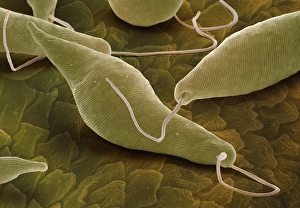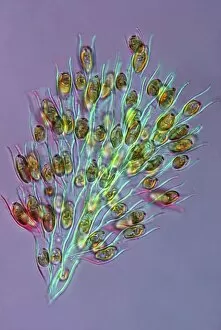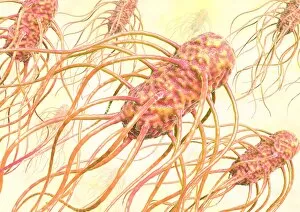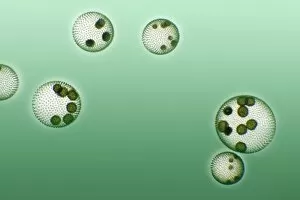Flagellates Collection
Flagellates are a diverse group of single-celled organisms that possess whip-like structures called flagella, which they use for locomotion
All Professionally Made to Order for Quick Shipping
Flagellates are a diverse group of single-celled organisms that possess whip-like structures called flagella, which they use for locomotion. One stunning example of these fascinating creatures is the Peridinea, captured in vibrant colour lithographs between 1899 and 1904. These images (Picture No. 11675473 to Picture No. 11675472) showcase their intricate beauty and mesmerizing patterns. Another captivating member of the flagellate family is Euglena gracilis, as seen through scanning electron microscopy (SEM). The SEM image (Euglena gracilis, SEM) reveals its slender body adorned with a long flagellum that propels it gracefully through its aquatic habitat. Delving further into the microscopic world, we encounter an array of captivating images depicting various species of flagellates. Each picture (Picture No. 11675474 to Picture No. 11675642) unveils unique features and characteristics that make these organisms truly remarkable. One particular image stands out - Euglena flagellate protozoa observed under SEM C016 / 9103 showcases the intricate details of this specific species' structure and highlights its distinctiveness within the vast realm of flagellates. These snapshots provide us with glimpses into a hidden universe teeming with life forms often unseen by the naked eye but crucial to our ecosystems. Flagellates play vital roles in nutrient cycling and energy transfer within aquatic environments, contributing significantly to maintaining ecological balance. As we marvel at these visually striking representations, let us remember that behind each image lies an entire ecosystem bustling with activity – a reminder of nature's intricacy and resilience even on such microscopic scales.















